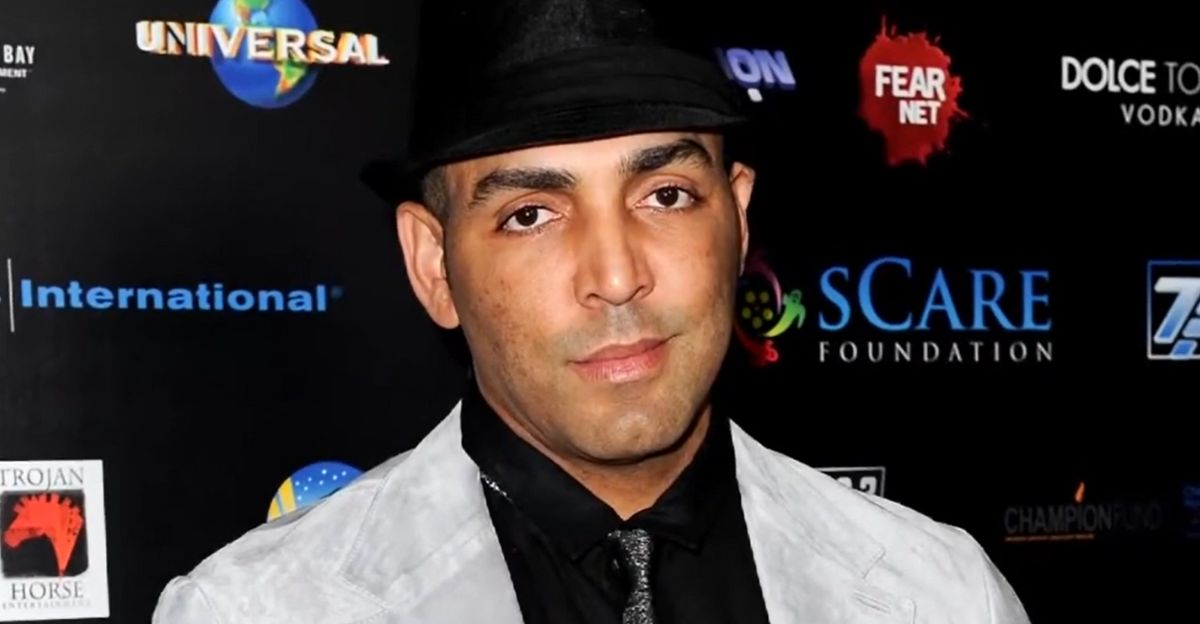
Hollywood’s most remarkable success story vanished. A man earned $420 million—more than most Fortune 500 CEOs—yet kept barely half of it. Where did $220 million evaporate?
What if the actor who commanded $30 million per film, who rescued Saturday Night Live, who made billions at the global box office, lost nearly everything to forces most of us never see coming? This is the story of a financial collapse—and what it reveals about the fragility of fame.
From $4,500 to Comedy Royalty

In 1980, this future icon earned $4,500 per episode of Saturday Night Live. Within one season, that jumped to $30,000—a 567%. He was 19 years old. By 1982, 48 Hrs. paid him $200,000. By 1984, Beverly Hills Cop earned him $14.5 million through a groundbreaking backend deal.
Studios threw money at a teenager who’d transformed comedy overnight. He had become the rarest commodity in entertainment: undeniable, irreplaceable, essential.
The Peak That Defied Gravity

By the 1990s, this star commanded $30 million per film. Coming to America, Beverly Hills Cop II, Trading Places—each crossed $100 million domestically. His films collected $6 billion globally, making him one of cinema’s most bankable superstars.
Studios competed to book him. Audiences showed up regardless of reviews. He seemed invincible. Then reality caught up.
The First Crack in the Foundation

In the 2000s, something shifted. Imagine That stumbled. A Thousand Words disappeared. Meet Dave vanished without leaving a footprint. His signature blend of comedy and action, which once guaranteed $200 million worldwide, now struggled to clear $100 million.
The man who’d been irreplaceable suddenly seemed replaceable. And then, in December 2012, one magazine would publicly confirm what his instincts had already told him.
The Reckoning Nobody Saw Coming

This story belongs to Eddie Murphy. Forbes magazine crowned him the most overpaid actor in Hollywood—the first and only moment a major publication explicitly branded an A-list star as box office poison.
His last three films returned only $2.30 at the box office for every dollar studios paid him. Top earners returned $5 to $10 per dollar invested. His ROI had collapsed by 57%, marking a public humiliation that shattered the myth of invincibility. The fall was published nationally. It was official. Murphy had become Hollywood’s cautionary tale.
The Animation Resurrection

But Murphy possessed a superpower most actors lack: reinvention. He voiced Donkey in Shrek, earning $3 million for the first film and $10 million for the sequel. The franchise crossed $900 million globally per installment. His voice acting portfolio ballooned to $35 million across multiple sequels.
When audiences rejected him as an action hero, they’d happily pay for his comedic voice. Murphy had escaped Hollywood’s death trap through animation. But his personal life was about to accelerate the collapse.
The Marriage Nobody Predicted Would Matter

In 1988, Murphy met Nicole Mitchell at an NAACP Image Awards ceremony. They married on March 18, 1993, at the Plaza Hotel in New York City, and produced five children: Bria, Myles, Shayne, Zola, and Bella.
Thirteen years later, in August 2005, Nicole filed for divorce. What followed was not just a personal dissolution but a financial earthquake that would trigger consequences neither of them anticipated.
The $15 Million Goodbye

The divorce settlement was finalized in April 2006; Murphy paid Nicole Mitchell $15 million as a one-time lump sum, rather than ongoing alimony. The figure seemed manageable—just 6% of his $420 million lifetime earnings. Murphy walked away believing he’d negotiated wisely.
He had no way of knowing that Nicole’s decision to accept a lump sum would set her on a collision course with one of the most sophisticated financial predators ever prosecuted in federal court.
When the Predator Arrived

After the divorce, Nicole Mitchell invested her $15 million settlement with financial adviser Troy Stratos, a childhood friend who claimed connections to billionaires, Middle Eastern royalty, and pre-IPO tech companies. He lived rent-free in her $5 million Granite Bay mansion, leased Rolls-Royces on her dime, and promised Facebook stock that never materialized.
He invented phantom ventures, such as “Project Nikki M” and “Collection X,” to obscure his theft. Nicole believed every word.
The Con Unfolds in Real Time

Between 2006 and 2011, Troy Stratos transferred approximately $10 million from Nicole’s accounts to his own—roughly two-thirds of her entire settlement. He wired money to personal accounts, leased luxury vehicles claiming they were necessary props, and promised returns that never arrived.
By 2010, just four years after receiving her divorce settlement, Nicole Mitchell Murphy was broke.
The Collapse Nobody Noticed

The IRS slapped Nicole with five tax liens totaling $846,630. Landscaping companies sued for $60,000. Legal firms filed judgments for $600,000. She owed $5 million on her mansion and was forced to sell. Her jewelry business failed. She’d lost $10 million to Stratos and watched the remaining $5 million evaporate through failed investments and tax liability.
One woman’s $15 million blessing had become a nightmare—all within a single decade.
The Con Man’s Reckoning

Troy Stratos was indicted in 2011 on charges of money laundering, wire fraud, mail fraud, and obstruction of justice. In September 2016, facing trial testimony from Michael Strahan and Nicole herself, Stratos changed his plea to guilty, confessing to 11 counts of fraud, two counts of money laundering, and one count of obstruction of justice.
The federal court ordered restitution to Nicole Murphy in the amount of $10,380,581, nearly the exact amount she’d lost. His confession came too late to restore what he’d stolen.
The $25 Million Shadow

Combine Murphy’s $15 million divorce settlement with Nicole’s $10 million fraud loss, and the total damage approaches $25 million. For context, that represents 6% of Murphy’s $420 million lifetime earnings.
Murphy’s case became a cautionary tale: wealth without vigilance is a target for predators; divorce settlements without financial oversight can evaporate within years.
The Netflix Gamble

In July 2019, Netflix offered Murphy $70 million for stand-up comedy specials—positioning him alongside Dave Chappelle and Chris Rock in the elite tier of comedy dealmakers. Murphy was being offered a redemption narrative, a comeback, a return to stage dominance.
The deal seemed designed to resurrect his brand and signal Hollywood’s forgiveness for the 2012 “most overpaid” designation.
The Specials That Never Arrived

Six years have passed since the Netflix deal was signed, and the stand-up specials remain unfinished. A Netflix documentary titled Being Eddie premiered in November 2025, featuring Murphy reflecting on his career alongside Dave Chappelle, Jerry Seinfeld, and Chris Rock.
But the $70 million comedy contract sits unfulfilled—a phantom deal that raises uncomfortable questions: Was the comeback ever genuine, or simply a negotiating benchmark?
The Burial of Hollywood’s Forgotten

In Being Eddie, Murphy revealed a responsibility that haunted his conscience for decades: paying for the funerals of entertainment legends who died without resources. “I had to bury Redd, I had to bury Rick,” Murphy disclosed, referring to comedy pioneer Redd Foxx and soul-funk icon Rick James.
He also purchased a headstone for Billie Thomas, who played “Buckwheat” in The Little Rascals. Each payment represented Murphy’s acknowledgment that fame evaporates instantly.
The Legacy Math

Murphy’s 10 children—scattered across five different mothers with age gaps spanning nearly three decades—will inherit approximately $25 million each from his $250 million estate. That seems substantial until context arrives: he earned $420 million, meaning 52% of his lifetime earnings vanished.
The missing $170 million remains unexplained: taxes, lifestyle, unwise investments, bad deals. For a man who once commanded $30 million per film, leaving $25 million per child represents wealth erosion that defies the narrative of unstoppable success.
The Question of Survival

What remains unclear is whether Murphy achieved redemption or endured long enough to reframe his story. Being Eddie positions him as a reflective elder statesman who buried legends, fathered 10 children across five decades, and built a $250 million net worth despite losing half his lifetime earnings. He survived divorces, fraud schemes, and Hollywood’s fickle box office calculations.
Whether audiences accept his narrative of resilience remains the final chapter in a 50-year career defined by constant reinvention.
The Cautionary Tale for All of Us

Murphy’s arc—$420 million earned, $250 million retained, $15 million paid in divorce, $10 million lost to fraud—illustrates an uncomfortable truth: even the highest earners suffer catastrophic wealth erosion. His 2012 Forbes designation as “most overpaid” broke the industry taboo that usually protects A-list reputations from public financial shame.
His ex-wife’s loss of two-thirds of her settlement within four years proved that sudden wealth without financial sophistication becomes a predator’s target.
The Unfinished Story

In November 2025, Murphy released Being Eddie, framing his life as a journey of survival rather than collapse. He remains one of Hollywood’s most recognizable figures, his career spanning 45 years of constant reinvention. The Netflix deal may never produce specials. The missing $170 million may never be fully explained.
His story endures as Hollywood’s most visible reminder that earning extraordinary wealth and keeping it are two entirely different challenges and that fortune, no matter how vast, is far more fragile than success suggests.


